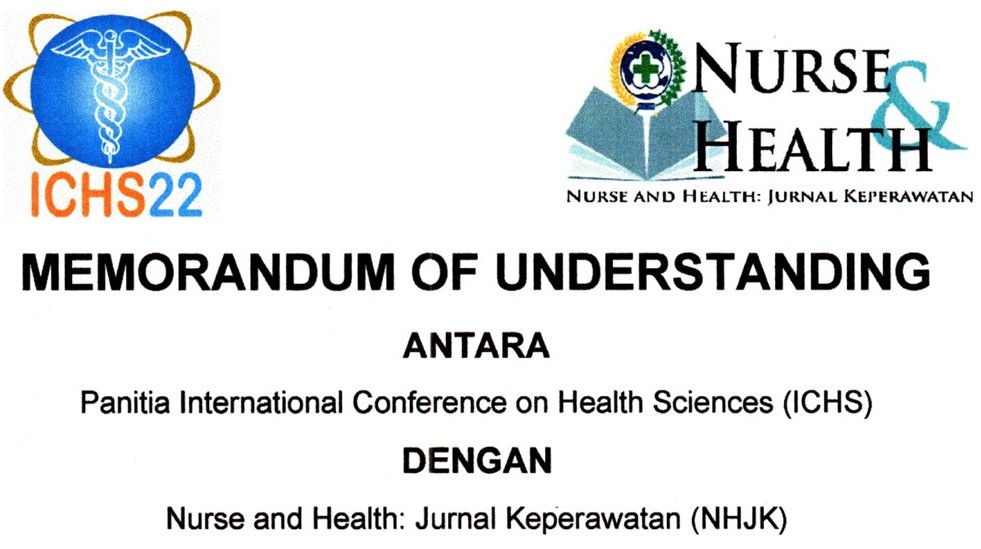EFFECTIVENESS OF PEER GROUP SUPPORT IN THE APPLICATION OF ACUPRESSURE AND ABDOMINAL STRETCHING ON MENSTRUAL PAIN IN ADOLESCENT FEMALES WITH THE SELF DETERMINATION MODEL
DOI:
https://doi.org/10.36720/nhjk.v13i2.679Keywords:
Abdominal Stretching, Acupressure, Menstrual Pain, Peer Group Support, Self-Determination ModelAbstract
Background: One of the changes that appears in adolescent is menstruation. One way to reduce menstrual pain is to use relaxation techniques, acupressure, and abdominal stretching. Another way is to help teenagers deal with pain by using group methods, such as peer group support.
Objective: The purpose of this study was to determine the relationship between Peer Group Support in the application of acupressure and abdominal stretching to menstrual pain in adolescent girls using the self-determination model approach.
Methods: This study used a quasi-experimental design with a pre-test and post-test design. The sampling technique used was simple random sampling. Inclusion criteria were respondents who had menstruated, experienced menstrual pain, aged at menarche between ≤12 years to ≥14 years, and had a menstrual duration of 7 days, as well as being cooperative and willing to be a respondent. The sampling technique used was simple random sampling. The sample size was 70 female adolescent respondents.
Results: The results of the study with Paired t-test showed that the Acupressure and Abdominal Stretching intervention groups both experienced changes with a value of p = 0.03 in the Acupressure and Abdominal Stretching groups and p = 0.000. On average, there was an increase in overcoming menstrual pain, but in the Acupressure group, there was only a slight increase in the t-count, which was 2.45. In the abdominal stretching group, the t-count value was greater, at 11.16.
Conclusion: The published research shows that acupressure and abdominal stretching were also carried out on the same group in the 2 intervention groups. The results were effective and could be carried out together, as evidenced by a decrease in the level of pain during menstruation and self-determination.
Downloads
References
Ardiani ND, Sani FN. Giving Abdominal Stretching Exercise to Dysmenorrhea Pain in Adolescents. Scientific Journal of Health (JIK). 2020; XIII.
Goddess MUK. Educational Peer Group Teenager to Teenager's Knowledge About Bullying. Midwifery Journal. 2021 Aug 18;10(2):97.
Fatmawati A, Ayu N, Gartika N. The effect of audiovisual health education towards the level of knowledge and dysmenorrhea handling attitude to the teenager. Nursing Health Scientific Journal. 2021 Jun 28;17(1):48.
Gail (2019) 'The Effect of a Web-Based Intervention on Psychosocial Weel-Being Among Adults Aged 60 and Older with Diabetes', (online), 34(4).
Ikafah, K. (2019) 'Analysis of Demographic Factors Associated with Distress of Inpatients in Yogyakarta', Journal of Health, 6(2), pp. 83–89. Available at:.
Khamida, Nurjanah S, Ainiyah N. Peer Group Support with the Health Promotion Model Nursing Approach Influences the Lifestyle Management of Santri. Journal of Health Sciences. 2019 Aug 30;12(2):109–17.
Kusmiran, E. (2016). Reproductive Health of Adolescents and Women (2nd ed.). Salemba Medika.
Maringga EG, Ivantarina D. Empowerment of Peer Groups: Education on the Use of Complementary Therapy to Reduce Primary Dysmenorrhea. ABDINUS Journal: Indonesian Service Journal. 2023 Jan 1;7(1):1–14.
Pengabdian, J., Masyarakat, K., Karokaro, TM, Zannah, M., Serdang, KD, & Primer Sari, AP, & Usman, A. (2021). Effectiveness of Acupressure Therapy on Dysmenorrhea in Adolescents. Journal of Medicine and Health, 17(2), 196. https://doi.org/10.24853/jkk.17.2.196-202 .
Puspita, L., & Anjarwati, T. (2019). Wellness and Healthy magazine. 1, 215–222.
Retno Gumelar W, Ekawati H, Martini DE, Fathiyatul N, Ummah4 R, Nursing S, et al. The Effect of Yoga Exercises with Audiovisual Media on Reducing the Intensity of Menstrual Pain (Dysmenorrhea). JOHC [Internet]. 2022 Dec 31 [cited 2024 Jun 20];3(3):2828–7509. Available from: http:/johc.umla.ac.id/index.html
Salsabila Putri J, Triana Nugraheni W, Tri Ningsih W, PD Study, Tuban Polytechnic of the Ministry of Health Surabaya K. Risk Factors Affecting the Incidence of Dysmenorrhea in Female Students at Mts Muhammadiyah 2 Palang, Tuban Regency. National Multidisciplinary Journal [Internet]. 2023 Sep 30;2(9):2589. Available from: https://jmi.rivierapublishing.id/index.php/rp
Sari AP, Usman A. Effectiveness of Acupressure Therapy on Dysmenorrhea in Adolescents. Journal of Medicine and Health. 2021 Jul 30;17(2):196–202. Available from:
Syaiful Y, Naftalin SV. Abdominal Stretching Exercise Reduces the Intensity of Dysmenorrhea in Adolescent Girls. Journal of Health Sciences. 2018;7(1).
Tamara G, Raharjo W, Ardiani Putri E. Relationship between Lifestyle and the Incidence of Primary Dysmenorrhea in Female Students of the Medical Education Study Program, Faculty of Medicine, Tanjungpura University. National Journal of Health Sciences (JNIK). 2020;2(3):130–40.
Windastiwi, W., Pujiastuti, W., & Mundarti, M. (2017). The Effect of Abdominal Stretching Exercise on Dysmenorrhea Pain Intensity. Journal of Midwifery, 6(12), 17. https://doi.org/10.31983/jkb.v6i12.1909 .
Downloads
Published
How to Cite
Issue
Section
Citation Check
License
Authors who publish with Nurse and Health: Jurnal Keperawatan agree to the following terms:
- Authors retain copyright licensed under a Creative Commons Attribution-NonCommercial 4.0 (CC BY-NC 4.0), which allows others to remix, tweak, and build upon the authors' work non-commercially, and although the others' new works must also acknowledge the authors and be non-commercial, they don't have to license their derivative works on the same terms.
- Authors are permitted and encouraged to post their work online (e.g., in institutional repositories or on their website) prior to and during the submission process, as it can lead to productive exchanges, as well as earlier and greater citation of published work (See The Effect of Open Access). Authors can archive pre-print and post-print or publisher's version/PDF.








